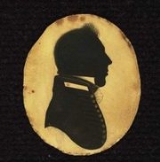
HMS Supply
Encyclopedia

Australia
Australia , officially the Commonwealth of Australia, is a country in the Southern Hemisphere comprising the mainland of the Australian continent, the island of Tasmania, and numerous smaller islands in the Indian and Pacific Oceans. It is the world's sixth-largest country by total area...
.
Oldest and smallest of the First Fleet
First Fleet
The First Fleet is the name given to the eleven ships which sailed from Great Britain on 13 May 1787 with about 1,487 people, including 778 convicts , to establish the first European colony in Australia, in the region which Captain Cook had named New South Wales. The fleet was led by Captain ...
ships, she was built in 1759 as an armed trader, of 175 tons, and had carried naval supplies between the Thames and Channel ports for 27 years. She left Portsmouth
Portsmouth
Portsmouth is the second largest city in the ceremonial county of Hampshire on the south coast of England. Portsmouth is notable for being the United Kingdom's only island city; it is located mainly on Portsea Island...
on 13 May 1787, and arrived at Botany Bay
Botany Bay
Botany Bay is a bay in Sydney, New South Wales, a few kilometres south of the Sydney central business district. The Cooks River and the Georges River are the two major tributaries that flow into the bay...
on 18 January 1788. She was captained by Henry Lidgbird Ball
Henry Lidgbird Ball
Henry Lidgbird Ball was a Royal Navy officer, best known for discovering and exploring Lord Howe Island.In 1788, having previously commanded HMS Supply, Lieutenant Ball commanded the vessel entrusted with shipping the first group of settlers from Botany Bay to Norfolk Island.Between 1788 and 1790,...
and the surgeon was James Callam. After the establishment of the initial settlement at Port Jackson, she was the link between the colony and Norfolk Island
Norfolk Island
Norfolk Island is a small island in the Pacific Ocean located between Australia, New Zealand and New Caledonia. The island is part of the Commonwealth of Australia, but it enjoys a large degree of self-governance...
, making 10 trips. Following the loss of Sirius in 1790 she became the colony's only link with the outside world. On 17 April 1790 she was sent to Batavia for supplies, returning on 19 September, having chartered a Dutch vessel, the Waaksamheid, to follow with more stores. Supply left Port Jackson on 26 November 1791 and sailed via Cape Horn
Cape Horn
Cape Horn is the southernmost headland of the Tierra del Fuego archipelago of southern Chile, and is located on the small Hornos Island...
reaching Plymouth
Plymouth
Plymouth is a city and unitary authority area on the coast of Devon, England, about south-west of London. It is built between the mouths of the rivers Plym to the east and Tamar to the west, where they join Plymouth Sound...
on 21 April 1792. She was bought at auction in July 1792, renamed Thomas and Nancy, and carried coal in the Thames area until 1806.

